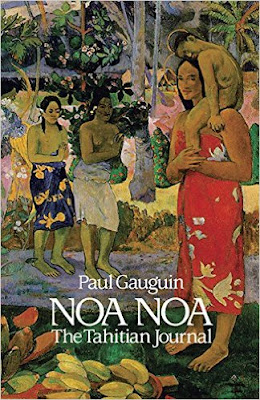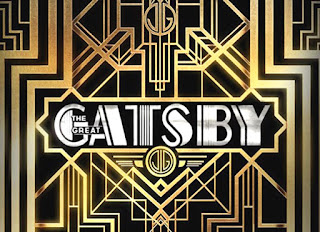Noa Noa: Paul Gauguin & Romanticism
 Paul Gauguin is one of my favorite painters. (Actually, as I write this, there is a print of his painting Mahana No Atua hanging next to me on my bedroom wall.) So, during my winter break, I decided to read his Tahitian journal, Noa Noa.
Paul Gauguin is one of my favorite painters. (Actually, as I write this, there is a print of his painting Mahana No Atua hanging next to me on my bedroom wall.) So, during my winter break, I decided to read his Tahitian journal, Noa Noa.
Noa Noa is a travelogue written by Gauguin, first published in 1901. Although, Gauguin billed the book as his genuine experiences, it seems pretty clear to me and other critics that it's mostly fictional or exaggerated. That being said, I found the book to be very interesting.
From a narrative perspective, Noa Noa is a bit dull. Gauguin's writing style has a tendency to be wordy and pedantic. However, from an ideological perspective it's quite interesting. To my mind, Gauguin is an excellent example of Romanticism and Romantic thought.
If you don't know, Romanticism was an artistic and ideological movement that reacted against the Enlightenment. Romantics believed that the world could not be understood purely though the lens of science and rational thought. Instead, the focused on emotion, individualism, the wonders of the national world, and the past.
From a narrative perspective, Noa Noa is a bit dull. Gauguin's writing style has a tendency to be wordy and pedantic. However, from an ideological perspective it's quite interesting. To my mind, Gauguin is an excellent example of Romanticism and Romantic thought.
If you don't know, Romanticism was an artistic and ideological movement that reacted against the Enlightenment. Romantics believed that the world could not be understood purely though the lens of science and rational thought. Instead, the focused on emotion, individualism, the wonders of the national world, and the past.
Gauguin is famous for his disgust for European society, which he believed had become corrupted by industrialization and modernization. He journeyed to the island of Tahiti in search of a more authentic way of life which would connect him to nature and genuine human experience. As Gauguin says in Noa Noa:
 |
| Mahana No Atua (Day of the Gods) |
In some ways, this is lovely sentiment -- and it translates into lovely art. Gauguin's paintings are alluring and colorful, depicting a world that is a mixture of fantastical imaginings and sunlight. Romantic artists attempt to depict the world not as it is seen by the eye but how it is perceived by the human mind and soul. In large part, it is an effective rejoinder to the Neoclassical movement and resulted in the priceless works of artists like Caspar David Friedrich and Théodore Géricault (who, incidentally, are both on my list of favorite artists).
However, it is very easy to look at Gauguin's paintings, say they are beautiful and otherworldly, and forget that they were modeled on real people and real cultures. Noa Noa, besides being a perfect example of the the Romantic ideology, is also a problematic text. While reading, I winced more than once when Gauguin made an off hand remark about the inferiority or primitiveness of the Tahitian people. While he clearly admires their culture, there are also clear undertones of racism. He repeatedly refers to them as savages and notes that they are childlike.
In some ways, Gauguin's paintings rob their subjects of their humanity, making them stand-ins for his ideological quest instead of real people. One can make the argument that many artists use their subjects in similar ways, however Gauguin's paintings are particularly problematic in that they further stereotype and dehumanize a group of people who were already stereotyped and dehumanized. Perhaps the best example of this is Gauguin's description of a walk through the forest that he takes with a Tahitian friend:
 |
| Another example of Romanic painting -- The Raft of the Medusa by Gericault |
With the suppleness of an animal and the graceful litheness of an androgyne he walked a few paces in advance of me...Was it really a human being walking there ahead of me? Was it the naive friend by whose combined simplicity and complexity I had been so attracted? Was it not rather the forest itself, the living Forest, without sex -- and yet alluring?
While his ideas have a sort of poetic resonance, they are extremely problematic when you consider that he is reducing a real person to vegetation. This makes Noa Noa a difficult text. Should one look at it as a reminder of a past dominated by racism and colonialism? Or, is it more helpful to set Gauguin's artistic achievements aside from his shortcomings as an individual? Whichever answer comes to mind, Noa Noa is certainly a text worth reading.
Just readin'


Comments
Post a Comment